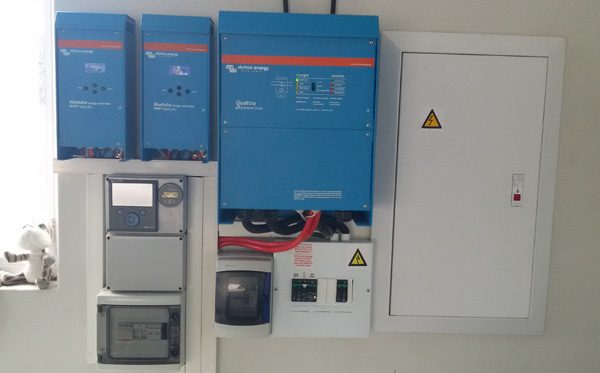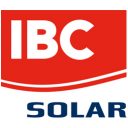Backup power in South Africa
Backup power has become crucial for businesses in South Africa due to frequent, unexpected power failures.

The most common causes of power failures in South Africa are:
- Load-shedding;
- Cable theft;
- Cabel faults;
- Ageing infrastructure.
The main effects of power-failures on businesses in South-Africa are:
- Loss of income;
- Lost productivity;
- Security risks;
- Inconvenience;
- Damage to electrical equipment from power surges.
The need for backup power in business.
With the regularity of power failures, it has become necessary for businesses to look at backup power. The effects of load-shedding are different for all business, and range from just a minor inconvenience to all production being stopped.
A detailed study of how power failures affect businesses in Johannesburg is available here.
How to add backup power to your business
Doing research on how to add backup power to your business can be a daunting task.
The first questions to answer are:
- exactly how much backup do require; and
- for how long?
Answering these questions will enable you to determine what type of backup system you need. A good electrician or company that specialises in backup power will be able to help you determine this.
Battery and inverter or generator?
Generators are still more cost-effective solutions for large power requirements. There is no specific cut off point but if your consumption is more than 45 kW, a generator will probably be a more cost-effective solution.
For low power consumption loads an inverter and battery-based system is probably a better solution. These systems are ideal for small businesses such as shops, restaurants, pharmacies, medical practices, workshops, etc.
Individual shops in shopping centres would find these systems ideal as they can basically be installed anywhere, unlike generators.
Advantages of inverter and battery based system over a generator
Inverter and battery based systems:
- are very quiet to operate;
- generate no air pollution;
- require minimal maintenance;
- can use solar power or Eskom power to charge the batteries;
- automatically and immediately supply power when there is a power failure;
- provide clean safe power for expensive sensitive equipment such as medical devices and electronics.
Generators
- can be very noisy;
- cause air pollution and make smoke;
- can be difficult to start;
- must be kept filled up with fuel;
- require regular maintenance;
- consume a lot of expensive fuel;
- can be complicated and dangerous to connect to a home distribution board.
How does an inverter and battery based system work?
The system is permanently connected to the mains power. When the mains power is present the batteries are charged with mains power, and the system keeps the batteries fully charged. When a power failure occurs the loads are automatically disconnected from the mains supply and connected to the backup power system. This automatic switch over happens inside the inverter via an extra fast automatic transfer switch. This switchover is extremely fast and equipment like Computers, TVs, Alarm system and so on does not notice it is being supplied with backup power, instead of mains power. it just continues to operate as normal.
When mains power returns, the procedure is reversed and the unit will switch back to mains power automatically. It will start re-charging the batteries. Even when the mains power is restored, your equipment remains connected to the system. The whole process is fully automatic.
What does the backup system consist of?
The system consists of two main parts, the inverter and the battery. The function of the inverter is to convert Alternating Current (AC) to Direct Current (DC) and vice versa. The power supplied by the mains power is AC. The power stored in the battery is DC. So the inverter is connected between the mains supply the battery and the loads.
Frequently asked questions.
What can be supplied with backup power?
The following, non-exhaustive, list of equipment can be connected to the backup power system as long as the total power consumption does not exceed the maximum power rating of the system:
- lights;
- computers;
- servers;
- internet routers;
- point of sale systems;
- alarm systems;
- gate motors;
- electric Fence;
- coffee machine;
Avoid connecting items which use a lot of power, or have high inrush currents, such as:
- geysers;
- underfloor heating;
- stoves;
- air conditioners;
- washing machines;
- tumble driers;
- dishwashers.
Most of these power-hungry appliances can be connected, but the system must be specifically designed to meet the power and energy needs of these items.
How long will the backup system last when there is a power failure?
The amount of backup time is determined by the size of the battery bank and the load drawn from the system. The more power the load draws from the system the sooner the battery will be empty. The backup time can be calculated with this simple equation.
kWh = Energy in kilo Watt-hours
kW = Power in kiloWatts
h = time in hours
"Available energy storage in kWh." dived by "Amount of power drawn in kW" equals "backup time in h"
For example: 10 kWh / 5 kW = 2h
How long will it take to recharge the batteries once the mains power returns?
It depends on the size of the connected battery bank, and the rated power of the charger. A good backup power company will be able to calculate this for you.
For example, if you have a 10 kWh battery bank, and your charger can charge at 2.5 kW, the battery will be fully charged in 5 hours if it was empty. The recharge time can be calculated with this simple equation.
kWh = Energy in kilo Watt-hours
kW = Power in kiloWatts
h = time in hours
"Battery capacity in kWh." dived by "Power rating of the charger in kW" equals "charge time in h"
For example: 10 kWh / 2.5 kW = 4h
Will the backup system be able to last for the duration of a power failure?
The backup system will last if the energy drawn from the battery during the duration of the power failure is less than the rated capacity of the battery. This needs to be calculated and the system needs to be sized during the design for your requirements.
Interested in finding out how your business can have access to backup power?
Then fill in our form to request a quote/consultation from qualified, pre-approved installers in your area.
28.10.2019 /

